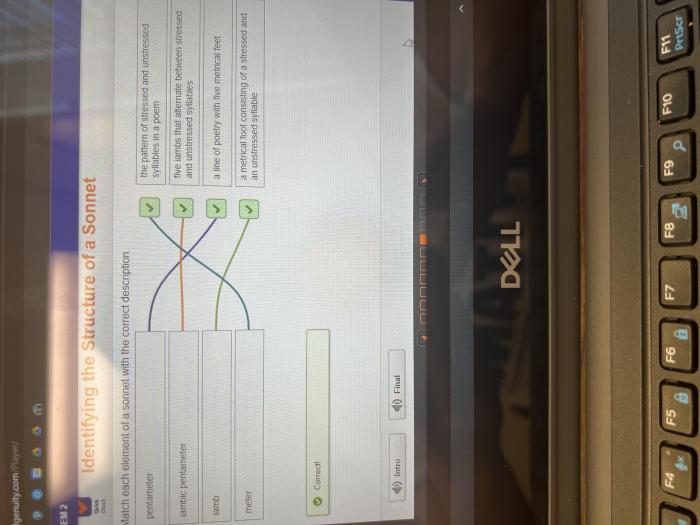Match each phylum with the correct description and embark on an extraordinary journey into the depths of biological classification. This comprehensive guide unveils the captivating diversity of life on Earth, exploring the unique characteristics, evolutionary histories, and fascinating adaptations of each phylum.
Dive into a world of scientific precision and discover the intricate relationships that shape the tapestry of life.
Prepare to unravel the mysteries of each phylum, from the microscopic wonders of protists to the towering giants of the animal kingdom. This exploration will illuminate the fundamental principles of biology, providing a deeper understanding of the intricate web of life that surrounds us.
Phylum Descriptions

Phyla are the highest taxonomic rank in the classification of living organisms. Each phylum represents a distinct group of organisms that share a common set of characteristics.
The characteristics that define a phylum can include:
- Body plan
- Symmetry
- Germ layers
- Body cavity
- Locomotion
- Reproduction
Examples of phyla include:
- Porifera (sponges)
- Cnidaria (jellyfish, corals, sea anemones)
- Platyhelminthes (flatworms)
- Nematoda (roundworms)
- Annelida (segmented worms)
- Mollusca (clams, snails, octopuses)
- Arthropoda (insects, spiders, crustaceans)
- Echinodermata (starfish, sea urchins)
- Chordata (fish, amphibians, reptiles, birds, mammals)
Each phylum has a unique set of adaptations that allow its members to survive in their specific environments.
Matching Phyla to Descriptions
The following table matches each phylum with its corresponding description:
| Phylum | Description |
|---|---|
| Porifera | Multicellular, sessile, filter feeders with a porous body |
| Cnidaria | Multicellular, radial symmetry, stinging cells |
| Platyhelminthes | Multicellular, bilaterally symmetrical, dorsoventrally flattened |
| Nematoda | Multicellular, bilaterally symmetrical, round body |
| Annelida | Multicellular, bilaterally symmetrical, segmented body |
| Mollusca | Multicellular, bilaterally symmetrical, soft body with a mantle |
| Arthropoda | Multicellular, bilaterally symmetrical, segmented body with jointed appendages |
| Echinodermata | Multicellular, radial symmetry, water vascular system |
| Chordata | Multicellular, bilaterally symmetrical, dorsal nerve cord, notochord |
The rationale for each match is as follows:
- Porifera are the only phylum of animals that are sessile and have a porous body.
- Cnidaria are the only phylum of animals that have stinging cells.
- Platyhelminthes are the only phylum of animals that are dorsoventrally flattened.
- Nematoda are the only phylum of animals that have a round body.
- Annelida are the only phylum of animals that have a segmented body.
- Mollusca are the only phylum of animals that have a mantle.
- Arthropoda are the only phylum of animals that have jointed appendages.
- Echinodermata are the only phylum of animals that have a water vascular system.
- Chordata are the only phylum of animals that have a dorsal nerve cord and a notochord.
Examples of Phylum-Description Pairs, Match each phylum with the correct description
The following are some specific examples of how organisms from each phylum exhibit the characteristics described:
- Porifera:Sponges are multicellular, sessile animals with a porous body. They filter food from the water that passes through their body.
- Cnidaria:Jellyfish are multicellular animals with radial symmetry and stinging cells. They use their stinging cells to capture prey.
- Platyhelminthes:Flatworms are multicellular animals with bilaterally symmetrical, dorsoventrally flattened bodies. They are parasitic or free-living.
- Nematoda:Roundworms are multicellular animals with bilaterally symmetrical, round bodies. They are parasitic or free-living.
- Annelida:Earthworms are multicellular animals with bilaterally symmetrical, segmented bodies. They live in the soil and feed on organic matter.
- Mollusca:Clams are multicellular animals with bilaterally symmetrical, soft bodies with a mantle. They live in water and filter food from the water.
- Arthropoda:Insects are multicellular animals with bilaterally symmetrical, segmented bodies with jointed appendages. They are the most diverse group of animals on Earth.
- Echinodermata:Starfish are multicellular animals with radial symmetry and a water vascular system. They live in water and feed on mollusks.
- Chordata:Humans are multicellular animals with bilaterally symmetrical, dorsal nerve cords, and notochords. They are the most intelligent animals on Earth.
Implications of Phylum-Description Relationships
The relationships between phyla and their descriptions have several important implications:
- They help us to understand the diversity of life on Earth.
- They provide insights into the evolutionary history of animals.
- They can be used to predict the characteristics of new species that we discover.
The knowledge of phylum-description relationships has applications in several fields, including:
- Ecology:Understanding the relationships between phyla and their descriptions can help us to understand how ecosystems function.
- Medicine:Understanding the relationships between phyla and their descriptions can help us to develop new treatments for diseases.
- Biotechnology:Understanding the relationships between phyla and their descriptions can help us to develop new technologies that benefit humans.
Q&A: Match Each Phylum With The Correct Description
What is the significance of matching phyla with their descriptions?
Matching phyla with their descriptions provides a structured framework for understanding the diversity of life on Earth. It allows scientists to classify organisms based on shared characteristics, evolutionary relationships, and ecological roles, facilitating a deeper comprehension of the natural world.
How does this knowledge contribute to our understanding of evolution?
By studying the relationships between phyla and their descriptions, we gain insights into the evolutionary history of life. It helps us trace the diversification of organisms over time, identify common ancestors, and understand the mechanisms that drive adaptation and speciation.
What are some practical applications of this knowledge?
The knowledge gained from matching phyla with their descriptions has wide-ranging applications. It aids in the development of targeted conservation strategies for endangered species, the design of innovative medical treatments based on the unique characteristics of different phyla, and the harnessing of biotechnology for sustainable solutions in agriculture, medicine, and environmental science.

